Parcours, the curated exhibition around Basel, is “the least commercial section” of Art Basel, says Samuel Leuenberger, its curator. Spread across 20 venues ranging from museums to Medieval chapels, this year’s edition, titled The Impossibilites of Being a Sculpture, explores the boundaries of sculpture in the public space. There are several Venice Biennale artists in the line-up: Lawrence Abu Hamdan, Cathy Wilkes, Jos de Gruyter and Harald Thys, among others. But such a major event can either benefit an exhibition such as Parcours, with galleries keen to promote their participating artists, or it can “snatch away an opportunity”, as artists become too busy, Leuenberger says. He is also the director of Salts, a local non-profit space that is marking its tenth anniversary this year by expanding into its courtyard to create “a mini Giardini situation with pavilions and outdoor/indoor spaces”. Here, he picks six highlights from the Parcours section.
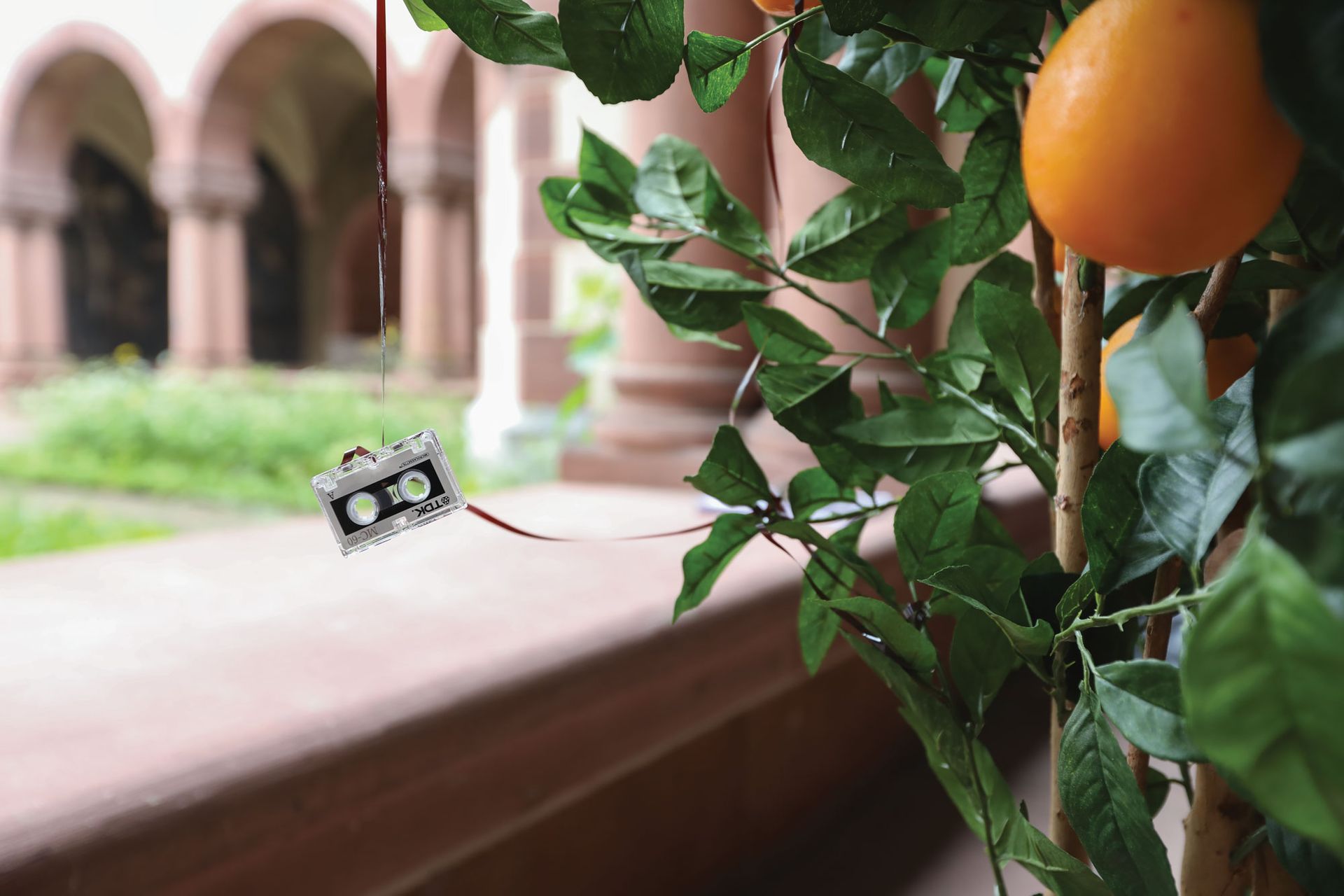
Lawrence Abu Hamdan, The Recovered Manifesto of Wissam [inaudible] (2017), Maureen Paley: “The State Archive [where the piece is located] is a good match for Lawrence’s work, which consists of ten fake clementine trees with dictaphone tapes hanging from their branches. In the mountains of Lebanon, tapes are often tied to fruit trees to ward off animals and insects. Lawrence realised that some of these tapes contained an audio script for a book or a manifesto. The voice of Wissam speaks about the esoteric Islamic concept of taqiyya which is understood as the right to lie in certain situations. Among the trees are also three fake rocks, which broadcast parts of the recording through hidden loudspeakers.” David Owens
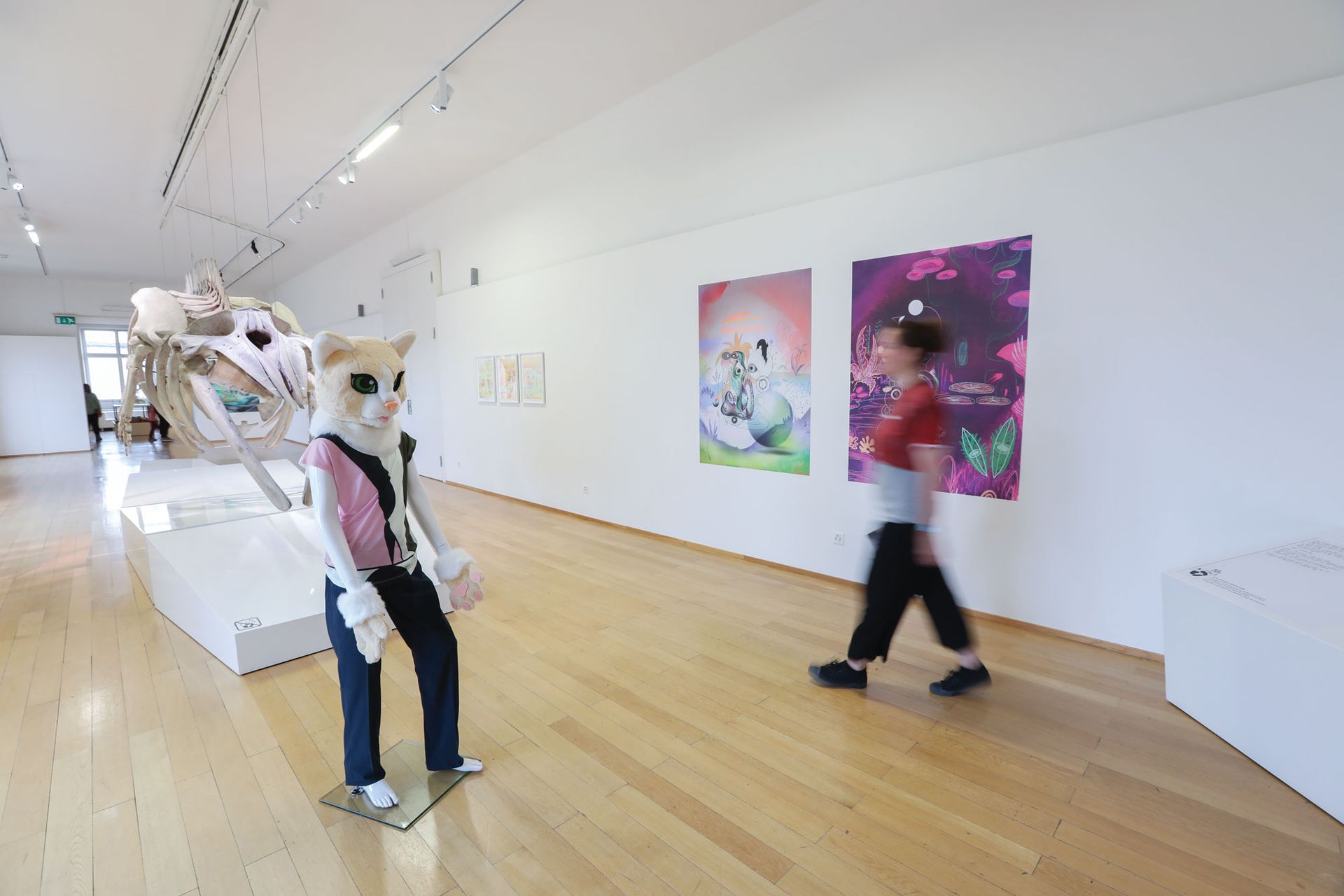
Ad Minoliti, Cyberselva-Night (2019), Galerie Crèvecoeur: “Minoliti’s work often deals with politics as she fights for women’s rights in her native Argentina. Every year we have projects in the Natural History Museum, but it’s the first time someone has chosen the whale room. She uses animal symbolism instead of the human form to address topics that are important to her. She is influenced by [the professor] Donna Haraway and by discussions around the Anthropocene and interspecies communication. Here she also references the history of concrete and abstract art in Switzerland—a good example of someone’s work organically integrating into an existing environment.” David Owens
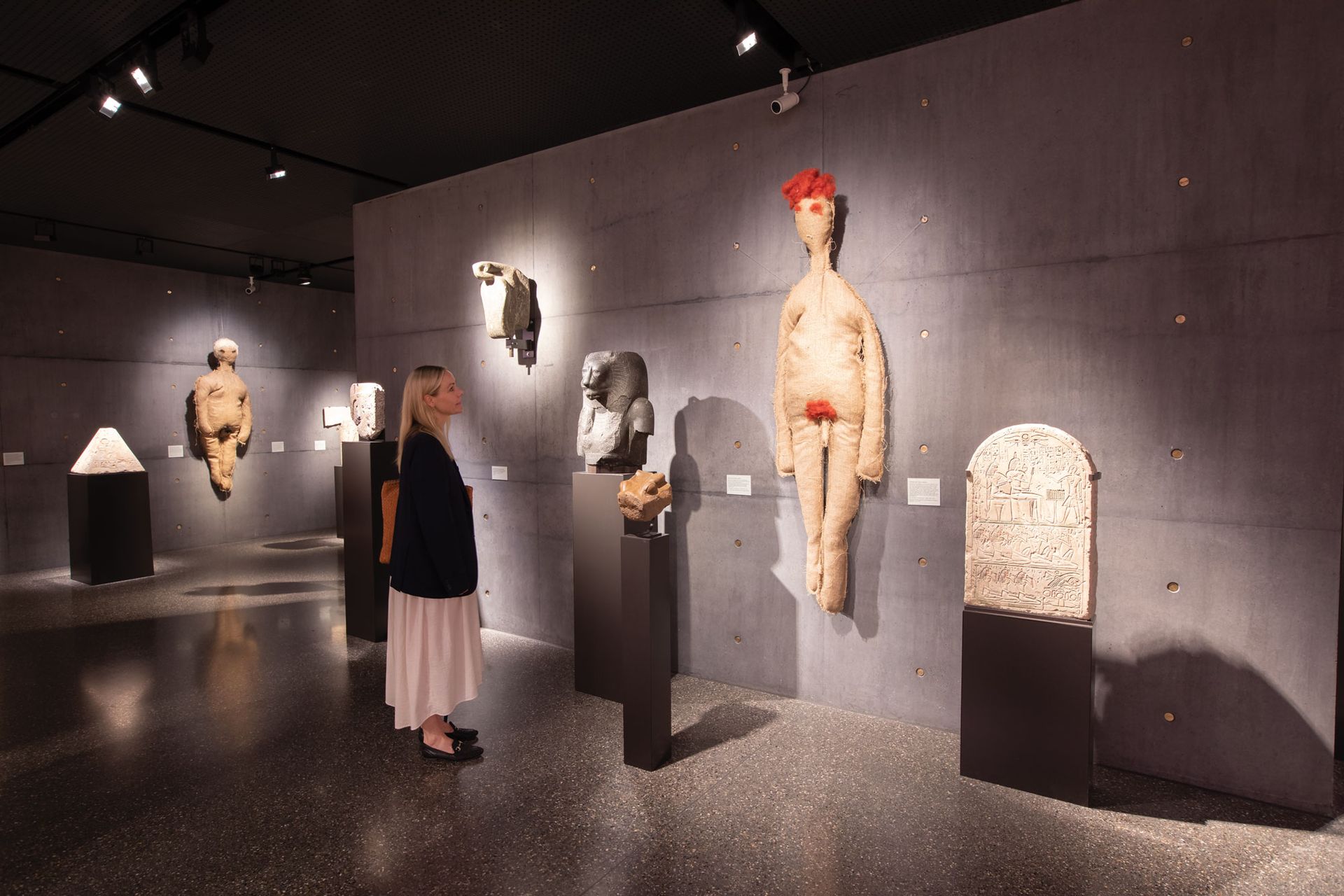
Jos de Gruyter & Harald Thys, Die Schmutzige Puppen von Pommern (2018), Dépendance: “The artists have been doing this series of dirty puppets for a while. They represent the descendants of a family of executioners from the historic region of Pomerania [in Central Europe]. In the 12th century, the family took the law into their own hands and executed people who didn’t follow their orders. A few centuries later, after the introduction of a proper legal system, the family was broken up, expunged and mocked. The naked straw puppets hang among the Antikenmuseum’s Egyptian mummies, which are usually displayed horizontally, in a tomb. Their verticality puts the puppets in stark contrast with these glorified mummified humans and animals”. David Owens
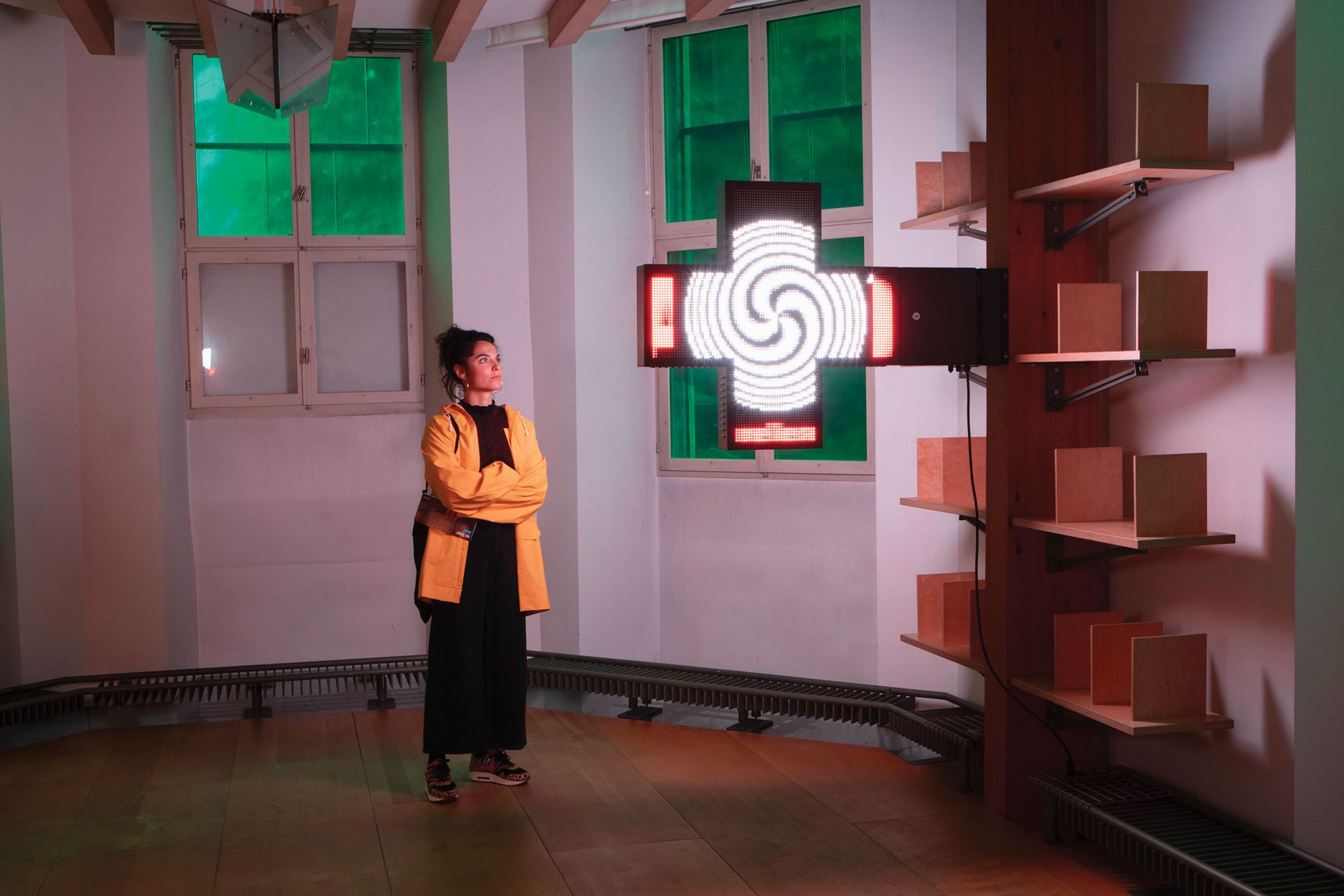
Mathis Altmann, teamcommercial (2019), Freedman Fitzpatrick/Truth and Consequences: “Finding new spaces for Parcours is a bit like working with your wish-list of artists. I’ve been trying to use some spaces for years, for example, this 12th-century chapel [in which the work is located], which was remodelled into an office in the 1970s. It’s a strange mix of Modern and ancient architecture. It has been difficult to find an appropriate project for it, but now we finally have one. The piece is based on Mathis’s research during his Chinese residency and his life in Los Angeles. He has lived in cities where an accelerated technology culture is clashing with high demand for amenities and real estate, layered behind a seductive web of visuals and sounds. For Parcours, he has created a series of cross-shaped LED signs imbued with a contemporary iconography of popular culture, tinted the windows with coloured foil and has even invited a special guest.” David Owens
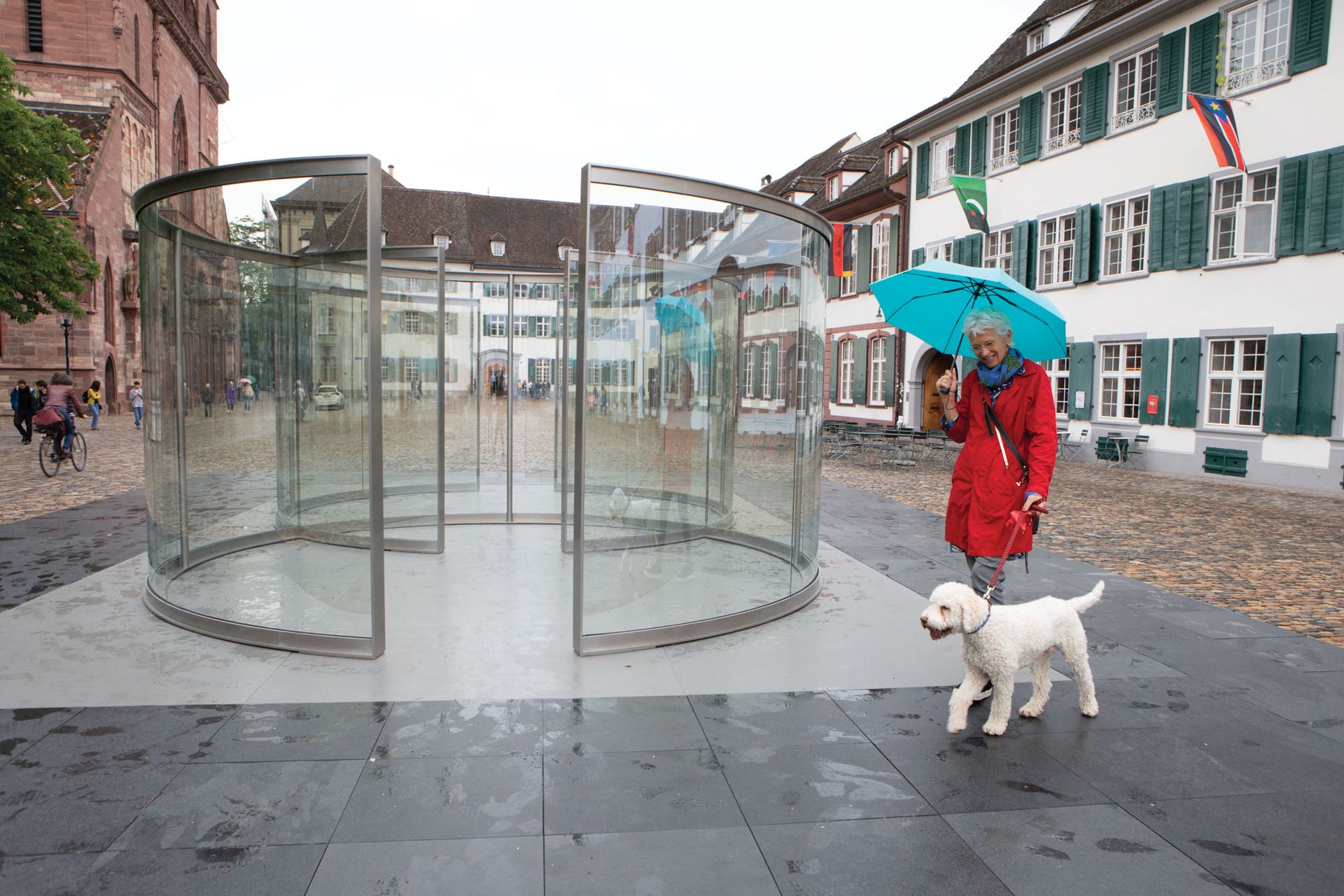
Dan Graham, Dancing Circles (2018), Greene Naftali: “This work has only been shown once before. An intersecting figure eight of sorts, it is a classical Graham pavilion oscillating at the intersection of sculpture and architecture, sitting on its own platform. But because it’s transparent, it’s playing with the openness of the Münsterplatz, with the reflection of the individual versus the crowd. For once, it’s nice to break up the square horizontally rather than vertically; people are used to seeing an Ugo Rondinone or Ai Weiwei there—central dominating vertical structures. This work lets you see through it or walk through it if you want to.” David Owens
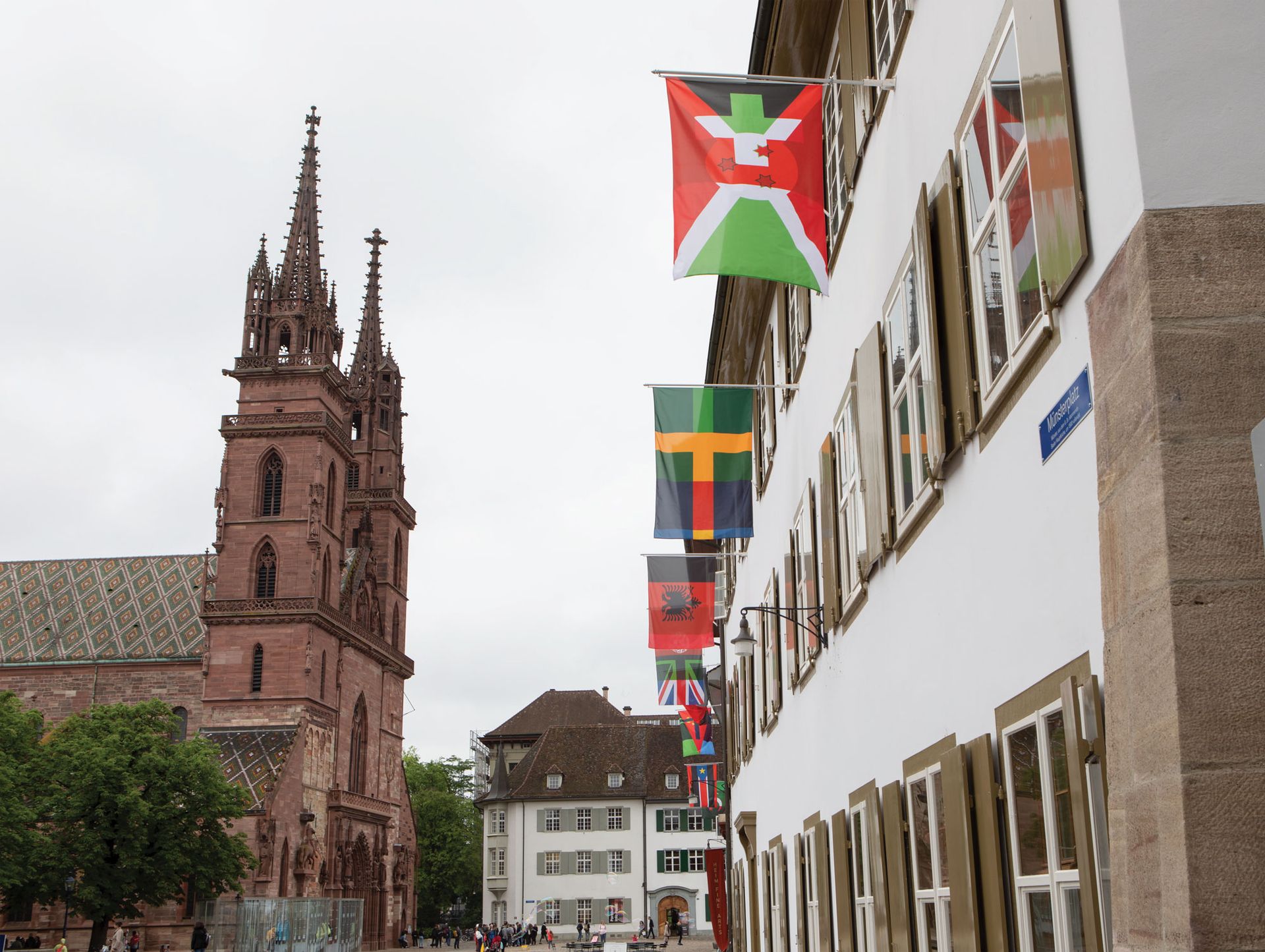
Pierre Bismuth, Abstractions (Switzerland/ Burundi) (2019), Jan Mot: “All of the buildings in the Münsterplatz have holders for mounting flags on national holidays, which intrigued Pierre. He made 15 flags for the square, superimposing two flags on one another. One represents a European host country while the other its biggest migrant group. So, for example, the largest number of migrants in Switzerland come from Eritrea. It is a beautiful and poetic work about abstraction and migration.” David Owens
Lawrence Abu Hamdan, The Recovered Manifesto of Wissam [inaudible] (2017), Maureen Paley: “The State Archive [where the piece is located] is a good match for Lawrence’s work, which consists of ten fake clementine trees with dictaphone tapes hanging from their branches. In the mountains of Lebanon, tapes are often tied to fruit trees to ward off animals and insects. Lawrence realised that some of these tapes contained an audio script for a book or a manifesto. The voice of Wissam speaks about the esoteric Islamic concept of taqiyya which is understood as the right to lie in certain situations. Among the trees are also three fake rocks, which broadcast parts of the recording through hidden loudspeakers.” David Owens
In pictures: dirty puppets, talking trees and flagging immigration at Art Basel's Parcours
This year's edition of the citywide exhibition explores the boundaries of sculpture in the public space
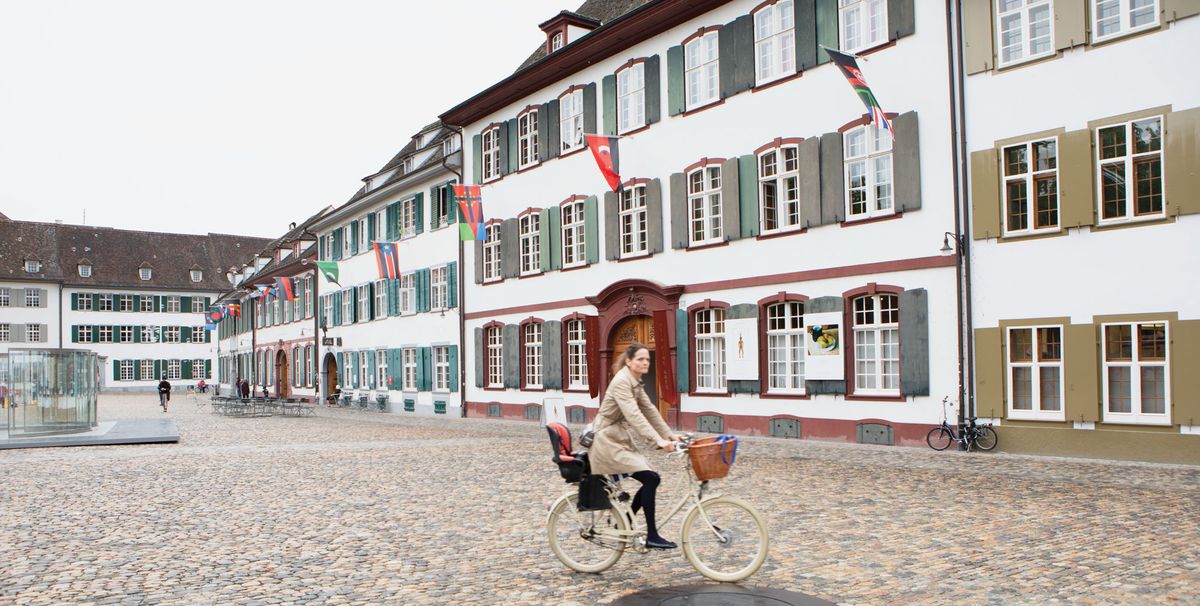
David Owens

